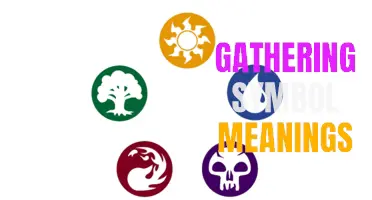
Carnations, with their delicate petals and vibrant colors, have long been a symbol of various emotions and sentiments. From love and admiration to motherhood and good luck, the meaning behind carnations is a fascinating aspect of their timeless beauty. Delve into the rich symbolism of carnations and discover the hidden messages these flowers carry in different cultures and contexts.
What You'll Learn
- What are the different symbolic meanings associated with the carnation flower?
- How has the symbolic meaning of the carnation flower evolved throughout history?
- Does the color of the carnation flower have a specific symbolic meaning?
- Are there any cultural or religious associations with the symbolic meaning of the carnation flower?
- How does the symbolic meaning of the carnation flower vary in different countries or regions?

What are the different symbolic meanings associated with the carnation flower?
Carnations are a popular and versatile flower that hold a variety of symbolic meanings. They have been cultivated for centuries and can be found in a wide range of colors, including white, pink, red, and purple. Each color of carnation is associated with its own unique set of meanings, making this flower a beautiful and meaningful gift for any occasion.
In general, carnations are often seen as a symbol of love and affection. They are commonly given on Mother's Day, as they are said to represent a mother's love. Additionally, carnations are often used in wedding bouquets and arrangements, symbolizing purity and good luck for the couple.
The white carnation is a symbol of pure love and innocence. It is often associated with eternal love and is sometimes used in funerals to represent a departed loved one's pure spirit. White carnations are also a popular choice for bridal bouquets, representing the bride's pure and innocent love for her partner.
Pink carnations are a symbol of admiration and gratitude. They are often given as a thank-you gift or to express admiration for someone's accomplishments or achievements. Pink carnations are also associated with love and are often given on Valentine's Day to show affection and appreciation for a loved one.
Red carnations are a symbol of deep love and affection. They are often associated with romantic love and are commonly given on Valentine's Day and anniversaries. Red carnations are also a popular choice for expressing condolences and sympathy, as they represent deep feelings of love and affection for the deceased.
Purple carnations are a symbol of capriciousness and unpredictability. They are often given to someone who is known for their spontaneous and impulsive nature. Purple carnations can also represent a sense of whimsy and playfulness.
In addition to their color symbolism, carnations are also associated with the month of January. They are the birth flower for January, representing those born in the first month of the year. Carnations are often given as birthday gifts in January to celebrate this special connection.
Overall, the carnation flower holds a wide range of symbolic meanings, making it a versatile and heartfelt gift for any occasion. Whether you choose a white carnation to represent pure love, a pink carnation to express admiration, or a red carnation to symbolize deep affection, this beautiful flower is sure to convey your emotions in a meaningful way.
Unveiling the Symbolism Behind the Bear Paw: What Does it Mean?
You may want to see also

How has the symbolic meaning of the carnation flower evolved throughout history?
The carnation flower has a rich history and has evolved its symbolic meaning throughout the years. Dating back to ancient civilizations, the carnation was considered a sacred flower with divine connections. In Greek mythology, it is believed to have originated from the tears of the goddess Artemis when she wept for her lover, Adonis. This association with love, beauty, and strength laid the foundation for the carnation's symbolism in later years.
During the Renaissance period, the carnation became a popular flower for art and literature. It became a symbol of love and fascination, often associated with passionate love and longing. The vibrant colors of the carnation were also used to convey different messages, with red representing deep romantic love, pink for a mother’s love, and white for innocence and pure love.
In Victorian times, the carnation's symbolic meanings became more refined and detailed. Each color of carnation held a unique message, and the language of flowers became popular. A red carnation was seen as a declaration of love, a pink carnation symbolized a woman's undying love, while a striped carnation represented refusal or rejection.
As time went on, the symbolic meanings of the carnation evolved further. In the early 20th century, the carnation began to symbolize Mother's Day. Anna Jarvis, the founder of Mother's Day in the United States, chose the carnation as the official flower of the occasion. She believed that the carnation represented pure and undying love, making it the perfect flower to honor mothers.
In some cultures, the carnation also holds religious significance. In Christian symbolism, the carnation is associated with the Virgin Mary. It is said that when the Virgin Mary cried during the crucifixion of Jesus, her tears turned into carnations, making the flower a symbol of her divine love and compassion.
Today, the carnation continues to have multiple meanings depending on its color. Red carnations express love and admiration, pink carnations represent gratitude and maternal love, white carnations symbolize purity and luck, and yellow carnations signify disappointment or rejection.
In conclusion, the symbolic meaning of the carnation flower has evolved throughout history. From its origins in ancient mythology to its various meanings in different cultures, the carnation has remained a powerful symbol of love, beauty, and strength. Its different colors have given it a range of meanings, making it a versatile flower that can convey a variety of messages. Whether it's a declaration of love, a tribute to mothers, or a symbol of purity, the carnation flower continues to hold deep symbolic significance in various aspects of life.
The Intriguing Symbolism and Significance of the Tomoe Symbol
You may want to see also

Does the color of the carnation flower have a specific symbolic meaning?
Carnations are a beautiful and versatile flower that come in a wide variety of colors. Many people may not be aware that the color of a carnation can have symbolic meaning. In this article, we will explore the different colors of carnations and their significance.
White carnations are often associated with purity, innocence, and love. They are a popular choice for weddings and other ceremonies, representing the pure love and commitment between two people. White carnations can also be used to express condolences and sympathy, making them a common choice for funeral arrangements.
Red carnations are a symbol of deep love and affection. They are often given as a romantic gesture to express strong feelings of love and desire. Red carnations are also associated with admiration and respect, making them an appropriate choice to give to someone you hold in high regard.
Pink carnations have a range of meanings depending on the shade. Light pink carnations are often associated with admiration and appreciation, making them a great choice to give to someone you admire or appreciate. Dark pink carnations symbolize gratitude and can be given to show your appreciation for someone's help or support.
Purple carnations are often associated with royalty and luxury. They can also symbolize success and pride, making them a great choice to celebrate achievements or milestones. Purple carnations can also be given to someone who is going through a difficult time as a symbol of support and encouragement.
Yellow carnations are often associated with friendship and joy. They can be given to a friend to show your appreciation for their friendship or to brighten their day. Yellow carnations can also be given as a symbol of new beginnings or to wish someone good luck.
Orange carnations are associated with enthusiasm and excitement. They can be given to someone to show your support and encouragement for a new project or endeavor. Orange carnations are also a great choice to give during the fall season, as they represent the warmth and vibrancy of autumn.
Green carnations are often associated with luck and good fortune. They can be given as a symbol of good luck to someone who is starting a new chapter in their life or embarking on a new adventure. Green carnations can also be associated with nature and the environment, making them a great choice for eco-conscious individuals.
Blue carnations are a relatively rare color and are often associated with mystery and the unattainable. They can be given to someone to represent their mysterious and intriguing nature or as a symbol of longing and desire.
In conclusion, the color of a carnation can have a specific symbolic meaning. Whether you are giving a carnation as a romantic gesture, a symbol of friendship, or as a representation of good luck, the color you choose can enhance the message you are trying to convey. By understanding the meaning behind each color, you can choose the perfect carnation to express your thoughts and emotions.
Unlocking the Mysteries: Exploring the Symbolic Meaning of the Third Eye
You may want to see also

Are there any cultural or religious associations with the symbolic meaning of the carnation flower?
Carnations are beautiful flowers that have been cultivated for centuries. These flowers are not only admired for their striking appearance but also carry symbolic meanings in different cultures and religions. Let's explore the cultural and religious associations with the symbolic meaning of the carnation flower.
In Christian tradition, the carnation is associated with the Virgin Mary. It is believed that the pink or white carnations are symbolic of the pure love and touch of the Virgin Mary. In some Christian ceremonies, carnations are used as decorations to honor the mother of Jesus. The white carnation, in particular, is considered as a symbol of love, purity, and faith.
In Buddhism, the carnation symbolizes the transience of life. The flower's short blooming period represents the impermanence of our existence. Buddhists use carnations as a reminder to live in the present moment and appreciate the beauty of life.
In Japan, the carnation is called "Koneko" and is associated with Mother's Day. It is a common practice to gift carnations to mothers on this special day as a token of love and gratitude. The Japanese believe that the carnation represents pure and eternal love for mothers.
In some cultures, the color of the carnation holds significance. For example, red carnations are associated with admiration and deep love, while yellow carnations symbolize disappointment or rejection. Pink carnations are often given as a sign of appreciation or to convey gratitude, while white carnations represent innocence and pure love.
The Victorian era also assigned meanings to different colors of carnations. For example, a striped carnation symbolized refusal, a yellow carnation represented rejection or disappointment, and a red carnation conveyed admiration or deep love.
Aside from cultural and religious associations, carnations have a general symbolism of love, affection, and gratitude. They are often given as traditional Mother's Day flowers, symbolizing a mother's love and caring nature. Carnations are also popular in wedding bouquets, where they represent love and commitment. In some cultures, they are used for funerals as a symbol of remembrance and purity.
In conclusion, the carnation flower holds various cultural and religious associations with its symbolic meaning. It is associated with the Virgin Mary in Christian tradition and represents pure love and faith. In Buddhism, the carnation represents the transience of life. In Japan, it is linked to Mother's Day and represents eternal love for mothers. Additionally, different colors of carnations hold different meanings in various cultures. Overall, carnations are cherished for their beauty and are often given to express love, affection, and gratitude.
The Hidden Meaning Behind the Mysterious 4 Triangle Symbol
You may want to see also

How does the symbolic meaning of the carnation flower vary in different countries or regions?
Carnations are beautiful flowers that are widely loved and appreciated for their vibrant colors and delicate petals. However, did you know that the symbolic meaning of carnations can vary significantly in different countries or regions? Let's explore the various meanings associated with carnations across the world.
In many Western cultures, carnations are commonly associated with love and admiration. They are often given as gifts on occasions like Mother's Day or Valentine's Day to express deep affection and appreciation. Red carnations, in particular, are said to symbolize love and passion, making them a popular choice for romantic gestures.
On the other hand, white carnations have a more somber meaning in many European countries. They are often used in funeral arrangements and are associated with death and remembrance. In countries like France and Italy, white carnations are traditionally used to honor deceased loved ones, making them a symbol of grief and mourning.
In some Eastern cultures, the symbolism of carnations may differ. In China, for example, carnations are believed to bring good luck and prosperity. They are often used in traditional ceremonies and festivals as decorations and offerings. In Japan, carnations are associated with purity and innocence, making them a popular choice for weddings and baby showers.
In addition to these regional variations, the color of the carnation can also influence its symbolic meaning. Pink carnations, for instance, are often associated with gratitude and appreciation, while yellow carnations symbolize rejection or disappointment in some cultures. Purple carnations, on the other hand, are often used to signify capriciousness or fickleness.
Despite the variations in interpretation, carnations are generally seen as a positive symbol in many cultures worldwide. They are admired for their beauty, fragrance, and ability to brighten up any space. Whether they represent love, luck, or remembrance, the carnation's symbolic meaning remains a powerful and versatile one.
In conclusion, the symbolic meaning of carnations can vary significantly in different countries or regions. While they are often associated with love and admiration in many Western cultures, they can symbolize grief and remembrance in some European countries. In Eastern cultures, carnations may represent luck, purity, or innocence. The color of the carnation can also influence its symbolic meaning, with pink representing gratitude, yellow symbolizing rejection, and purple signifying fickleness. Overall, carnations are cherished for their beauty and fragrance, regardless of the specific symbolism attached to them in different cultures.
The Evolving Significance of Symbols: Understanding the Shifting Meaning of Iconic Representations
You may want to see also
Frequently asked questions
A pink carnation is most commonly associated with the concept of motherly love. It symbolizes gratitude, admiration, and love for a mother figure. It can also be used to represent femininity and gentleness.
A red carnation is often associated with the concept of romantic love and passion. It is a symbol of deep affection and desire. Additionally, it can also represent admiration and affection for someone.
A white carnation is often used to symbolize purity, innocence, and chastity. It is commonly associated with weddings and represents the pure and sacred love shared between two individuals. It can also be used to express remembrance and honor for a loved one who has passed away.
A purple carnation is often associated with spirituality and mysticism. It can symbolize whimsy, imagination, and creativity. In some cultures, purple carnations are also used to represent royalty and nobility.







